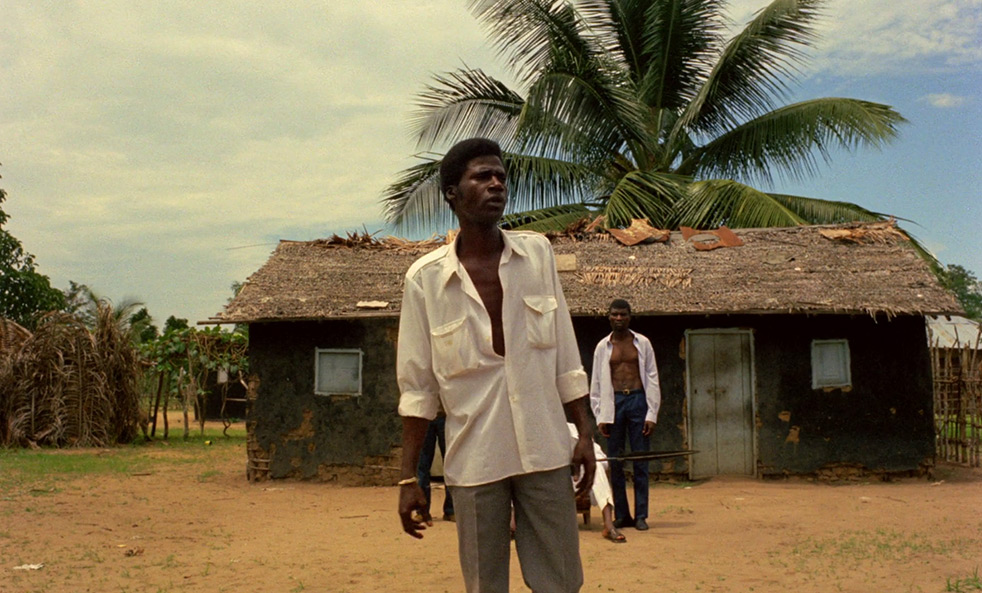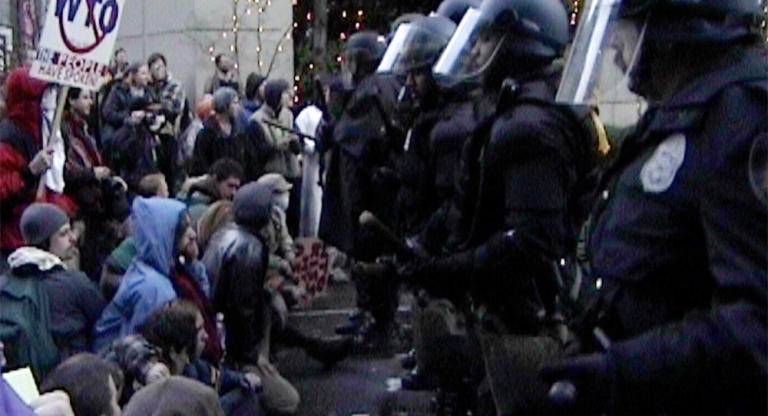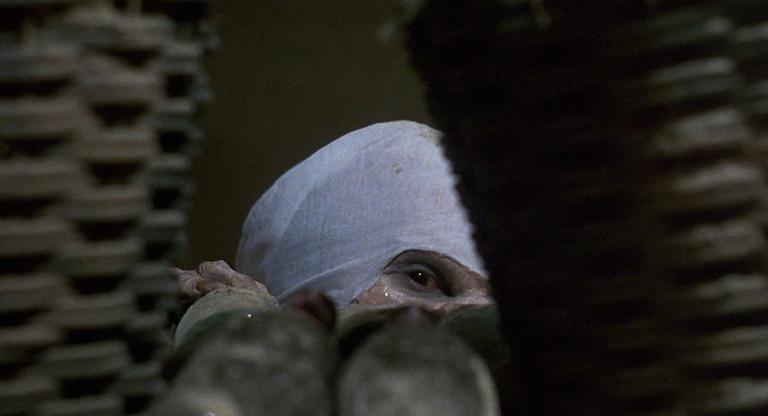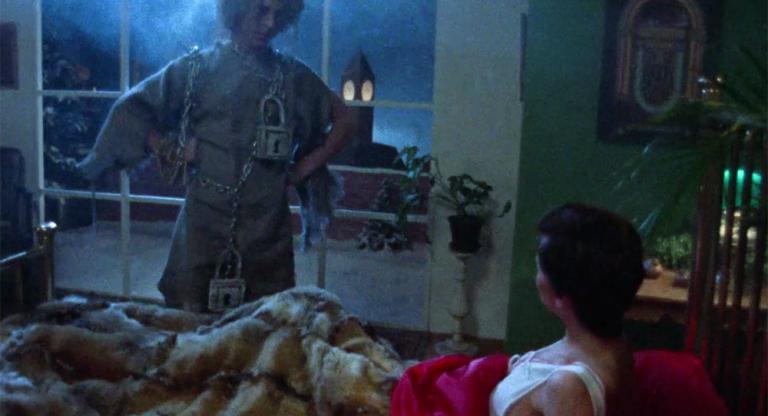Between 1969 and 1976, Brazilian director Glauber Rocha filmed a series of movies while in political exile. First was The Lion Has Seven Heads (1970), shot in the Democratic Republic of Congo, followed by Cutting Heads (1970, filmed in Spain) and Claro (1975, made in Italy). Each of these saw the great polemicist exercise a distinct directorial muscle, constantly expanding upon and reimagining his signature blend of Brechtian staging and darting camerawork. And while each of these films stresses a different aspect of Rocha’s filmmaking—his careful framing, as seen in The Lion Has Seven Heads; his knack for spinning political fables, evidenced in Cutting Heads; his somehow both calculated and carefree approach to editing, central to Claro—all of his experimentation, as well as his theoretical musings, wouldn’t reach their apotheosis until he made his final film back in Brazil, that perfect, Pasolini-inspired trance titled The Age of the Earth (1980).
I cite the films that followed The Lion Has Seven Heads because they are rarely screened in the United States and nevertheless offer a bit of context regarding a period in Rocha’s life that is often elided. Generally speaking, his career is considered in terms of the films he made before he left Brazil and those he made upon returning to his home country. But that interregnum is crucial to his artistic development; not only, as is often stressed, is this when Rocha worked with fellow radical filmmakers Jean-Luc Godard and Pierre Clémenti, but this period of itinerancy also confirmed to him the pervasiveness of an imperialist doctrine that was widespread across the “The Third World.” The Lion Has Seven Heads observes the spread of imperialism in the Democratic Republic of Congo, staging a conflict between a local liberation front and the various forces opposing it—chiefly, the Church and the CIA.
Rocha’s film is assembled as a series of tableau shots, almost like those of Sergei Parajanov or Straub-Huillet. His frames are controlled, but their action unbridled. Rocha, for whom Sergei Eisenstein was a perennial influence, works with this compositional tension to build an escalating sense of dread throughout the film. The sense that any sense of order—compositional, social, mental—will be followed by a breakdown is reiterated throughout The Lion Has Seven Heads, as Rocha observes the many insidious ways in which foreign agents weasel their way into local affairs and throw them into disarray. Here, we observe CIA agents meddle in local elections and white preachers peddle inanities about communism. Most of the film, excepting a calmly-staged final scene of the local militia getting ready to fight back, carries a sense of dread, a post-’68 malaise that Rocha appears to be exorcising through a series of violent shouts. Nowhere is this better expressed than when a CIA agent, holding a Latin American activist prisoner, screams: “Communism does not exist. It is an illusion. No more dream about.”
But Rocha could never stop dreaming. His follow-up to his famous manifesto “The Aesthetics of Hunger” was titled “The Aesthetics of Dreams.” Delivered as a speech at Columbia University in 1971, “The Aesthetics of Dreams” argued that art should supersede rationality; or, as he put it, “Revolutionary art should be magic that is capable of seducing man to the point that he can no longer bear to live in this absurd reality.” The promise of a better future, of the afterlives of ‘68 and the fight-to-come at the end of The Lion Has Seven Heads, was always more important for him than those horrors that scarred his present. Of course, one had to be aware of said horrors, to understand them, and to film them in such a way that could shake a viewer into action in order to arrive at a dream, to escape reality.
This treacherous journey, from the hard-hit “Third World” toward a blissful dream, not only forms the basis of several Rocha films, but informs his camerawork too. His camera often starts still, and with time begins to glide. A parallel exists in Jacques Rivette’s camerawork throughout Out 1, another ghost of ‘68 released in ‘71. There, the close, fixed observation of an experimental theater troupe gives way to a camera as adrift as its characters; it opens on a static shot of an actress upside-down and ends with a freewheeling sequence involving an actor rolling around a beach. If the connection seems tenuous, let me identify Jean-Pierre Léaud as its nexus, that devilish French New Wave avatar whose acting has always been synonymous with the mood of his nation’s filmmakers—spirited and rebellious before ‘68, despairing and dangerous in its wake. Where Léaud plays a mischievous mute in Rivette’s film, Rocha has him shout out his every frustration on-screen as a mad preacher whose meltdowns feel literal in the Congolese heat. Rocha was always one for directness, and The Lion Has Seven Heads stands out as one of his most visceral, immediate films about revolutionary fervor and its suppression.
The Lion Has Seven Heads screens tonight, May 30, and tomorrow May 31, at Metrograph as part of the series “Glauber Rocha: Of Hunger and Dreams.”



